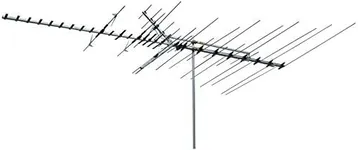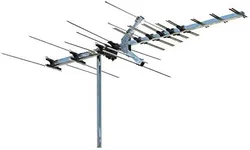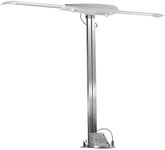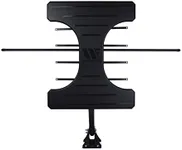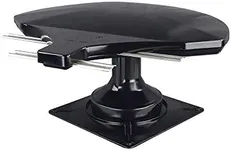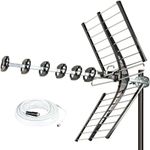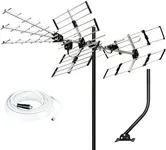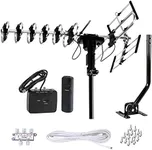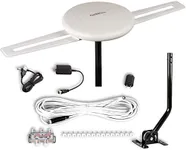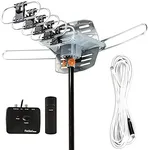Buying Guide for the Best Hd Tv Antenna
Choosing the right HD TV antenna can significantly enhance your television viewing experience by providing access to free over-the-air channels in high definition. The key to selecting the best antenna for your needs is understanding the various specifications and how they relate to your specific situation. Here are the key specs to consider and how to navigate them.RangeThe range of an HD TV antenna indicates how far it can receive signals from broadcast towers. This is important because it determines the number of channels you can access. Antennas typically range from 20 miles to over 100 miles. If you live in an urban area with broadcast towers nearby, a shorter range antenna (20-50 miles) should suffice. For suburban or rural areas, where towers are farther away, you might need an antenna with a range of 50-100 miles or more. To pick the right one, consider the distance to the nearest broadcast towers and the terrain between you and the towers.
Frequency BandsHD TV antennas can receive signals on different frequency bands, mainly VHF (Very High Frequency) and UHF (Ultra High Frequency). This is important because some channels broadcast on VHF while others on UHF. A good antenna should support both VHF and UHF to ensure you can receive all available channels. If you know that most of your desired channels are on a specific band, you can prioritize an antenna that performs well on that band. However, for the best coverage, choose an antenna that supports both VHF and UHF.
Indoor vs. OutdoorHD TV antennas come in indoor and outdoor models. Indoor antennas are typically smaller, easier to install, and suitable for areas with strong signal reception. Outdoor antennas are larger, more powerful, and can pick up signals from farther away, making them ideal for areas with weak signal reception. If you live in an urban area with strong signals, an indoor antenna should work well. For suburban or rural areas with weaker signals, an outdoor antenna might be necessary. Consider your living situation and signal strength when choosing between indoor and outdoor models.
Amplified vs. Non-AmplifiedAmplified antennas have a built-in signal booster to enhance weak signals, which can be crucial in areas with poor reception. Non-amplified antennas do not have this feature and rely solely on their design to capture signals. If you live far from broadcast towers or in an area with many obstructions (like buildings or trees), an amplified antenna can help improve signal quality. In areas with strong signals, a non-amplified antenna should be sufficient. Assess your signal strength and potential obstructions to decide if you need an amplified antenna.
Multi-Directional vs. DirectionalMulti-directional antennas can receive signals from multiple directions, while directional antennas focus on signals from a specific direction. This is important because it affects how you position the antenna and the number of channels you can receive. If broadcast towers are located in different directions from your home, a multi-directional antenna is beneficial as it can capture signals from all around. If most towers are in one direction, a directional antenna might provide a stronger and more reliable signal. Determine the locations of your local broadcast towers to choose the right type.
